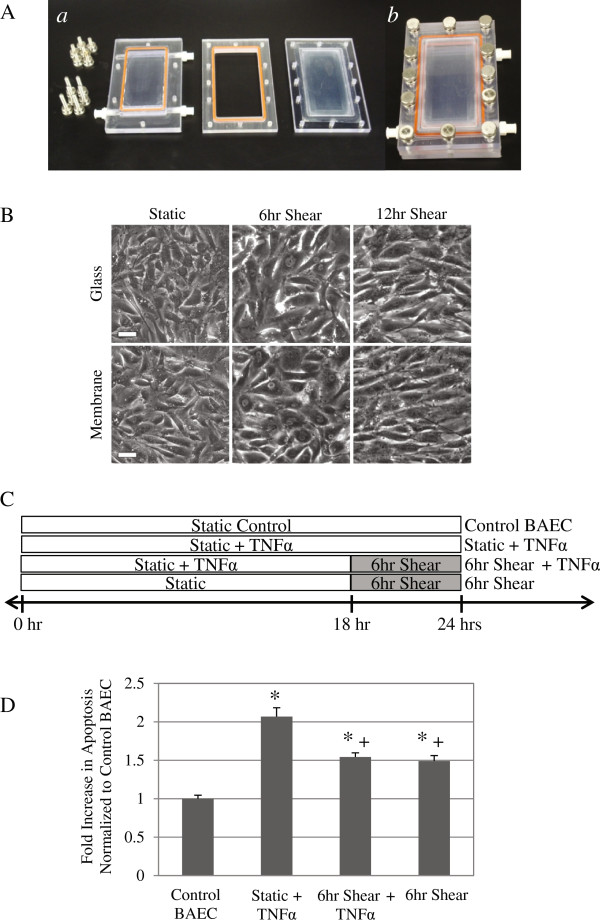Figure 1.
Shear stress suppressed apoptosis subsequent to TNFα induction on cells plated on silicone membrane. (A) Parallel plate design was redesigned to accommodate membrane substrate. (a) The top, middle, and bottom portion of parallel plate flow chamber, and (b) flow chamber assembled together. (B) BAEC spread on both glass and silicone membrane substrates, and after 24 hours cells reached confluency and formed uniform monolayer. Phase contrast images of static and sheared BAEC (12 dynes/cm2 for 6 and 12 hours) show that cells have begun to align with the direction of flow. White scale bar = 50 μm. (C) Diagram of 4 experimental groups. Control groups are static (Control BAEC) and 12 dynes/cm2 for 6 hours alone (6 hr Shear). Other cells were either incubated with TNFα (25 ng/ml) for a 24-hour period (Static + TNFα) or treated with TNFα for 18 hours followed by shearing at 12 dynes/cm2 for 6 hours (6 hr Shear + TNFα). We examined cell apoptosis using TUNEL staining. Results were quantified using FACS flow cytometry, and apoptosis data is presented as fold increase over control BAEC (D). TUNEL positive cells increased with TNFα treatment (25 ng/ml) (* P < 0.01), while subsequent shearing significantly reduced percentage of apoptotic cells (+ P < 0.05). Shear stress alone at 6 hours also promoted apoptosis, independent of TNFα treatment, though apoptosis was still significantly less than static TNFα treated cells. All data represent average ± standard error (n ≥ 5). * P < 0.01, compared to Control BAEC, + P < 0.05, compared to Static + TNFα.

